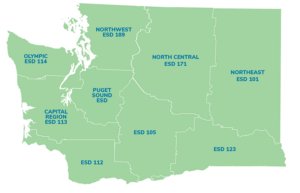
During the field portion of your trip, students head across the street to the beach and take part in a scientific beach cleanup. Students will create a hypothesis about what type of debris they expect to be the most abundant on the beach. Working in pairs, students will collect trash and different types of kelp or shells on the beach and record data as they go. Older students will get together with other groups and calculate the totals of what they calculated, and we will compare to data collected in 2011. Younger students will discuss the anatomy of kelp and the role that kelp forests play for nearshore ecosystems. This activity encourages your students to interact directly with the marine sanctuary to make a difference and work with real data.
|
|
|
|
|
|
|
|
|
|
|
|
|
|
|
|
|
|
 Please select the district(s) your located in. Used this map for reference.
Please select the district(s) your located in. Used this map for reference.